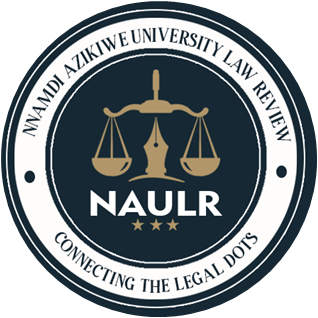BY CHINAZA DUKE NWOSU ESQ
Abstract
Trials for murder are fraught with numerous bottlenecks. These bottlenecks are occasioned consequent upon the ultimate desire of justice for the state, the accused person and the nominal complainant. Specifically, in trials for murder and other capital offenses, the desire for justice is overriding, and the standard of proof residing on the prosecution is very onerous. As usual in all criminal trials, the prosecution must prove beyond reasonable doubt. Yet for capital offenses, this would be so, even when the defendant admits to guilt during plea. The prosecution must still proceed to prove the defendant guilty beyond reasonable doubt, while the judge is mandated to enter a plea of not guilty for the defendant. The prosecution is therefore saddled with the very grave responsibility of establishing to the court beyond reasonable doubts that the victim of the alleged crime is in fact dead, that the victim was actually killed, and that it was the accused person who killed the victim of the alleged crime. In proving that the victim is actually dead, the prosecution would need to either bring the dead body to court, provide a certificate of death or a post mortem report. The prosecution employs a lot of strategies in surmounting these obstacles. He may call expert evidence, especially when a post mortem report is involved, in order to circumvent the overlaying rule of hearsay. The science of death is not one easily understood by persons who are not versed in forensics, or who have not got some form of medical training or development in the areas of health. This therefore presents the problem of the grave tendencies of believing the expert and his evidence hook, line and sinker. Ordinarily, the Court is vested with the grace of believing or not believing any expert, yet one can understand what this implies. Where expert evidence of this nature is compelling and logical, whether correct or not, the court might be inclined to believing, since there is no contradicting basic knowledge as a basis for holding otherwise, and the evidence is not manifestly perverse to common sense. This work therefore examines the various hurdles present in proving the cause of death, and the input of the science of forensics involved in the stages of death, in assisting the prosecution to offset the burden of proof placed heavily by criminal jurisprudence and evidence. This work also highlights the dangers of believing inferences from stages of death as a sole basis for conviction. Furthermore, the counterproductive tendencies of expert evidence in this line are equally taken into account. The researcher employs the doctrinal approach to research, and adopts the use of primary and secondary sources of laws, as well as scientific and forensic analysis. The researcher will show the invaluableness of science to the subject matter, and will submit the various ways the Nigerian Jurisprudence would benefit by the application of this body of knowledge. The Researcher equally hopes that cross examiners in this area would employ this body of knowledge in questioning expert evidence in this line.
To download full article, click here
